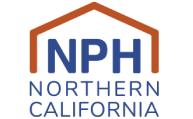From the Forward:
As a result, the county is quite literally green: Marin County has protected 84% of its land as parks, open space, watersheds, tidelands, and farmlands. No other Bay Area county has protected nearly as high a percentage of its land.
Marin County residents personally make green choices, too: the county has the highest rate of ownership of Priuses and other hybrid cars of any California county— four times the statewide average, in a state known for its environmental leadership. Marin is also a leader in clean energy, having launched the first community choice energy program, which provides its customers with the option to receive power from renewable resources.
But it’s not enough. In spite of Marin’s track record in protecting land and embracing individual green choices at home, Marin’s impact on climate change is disproportionately large, and growing. On average, per person, Marin residents emit 13.5 metric tons of greenhouse gases per year.
For 10 years, Sustainable Marin has been working for a future we can live in: one that advances environmental and economic sustainability and social well-being. We advocate and collaborate in our communities on climate protection, zero waste, clean energy, water conservation, green building and schools, and transportation.
Increasingly, we understand that where people live in relationship to their jobs affects how much they drive, and the size of their carbon footprint. The Live Local campaign, a partnership between NPH, Greenbelt Alliance, and the Marin Community Foundation, envisions a future Sustainable Marin endorses: a range of home types, next to transportation choices and affordable to many, that will mean less driving and less polluting for Marin’s workers and residents.


